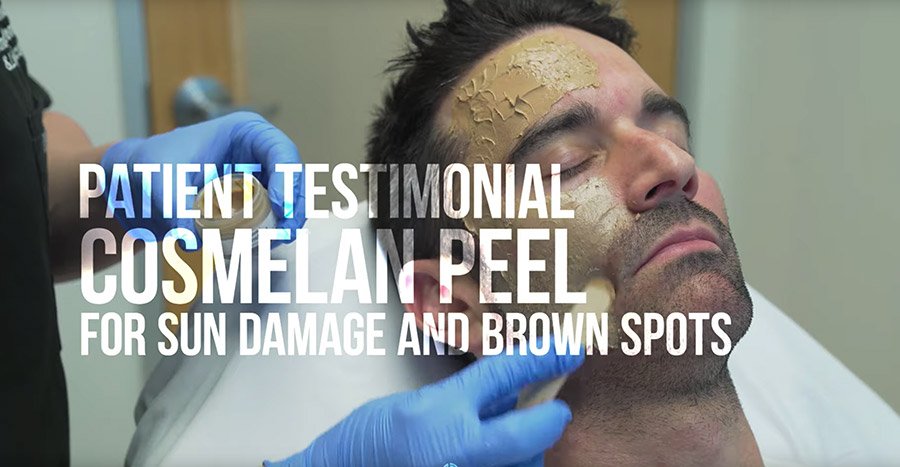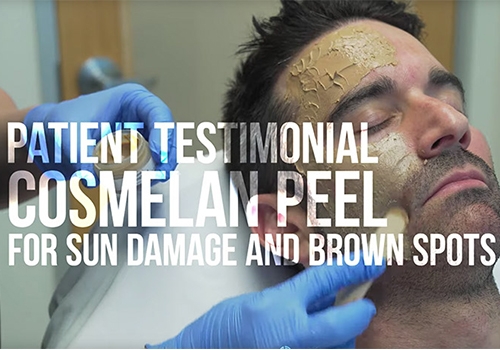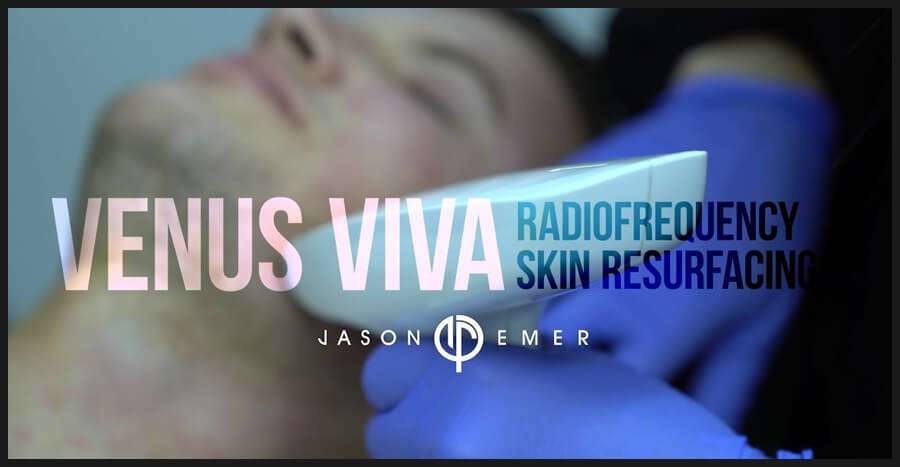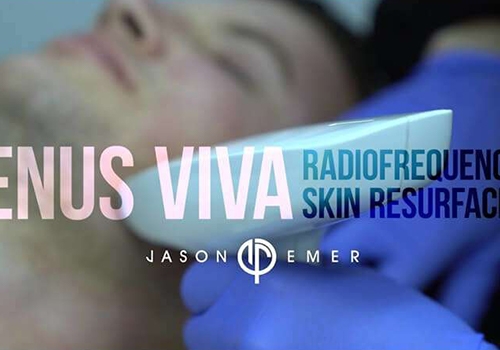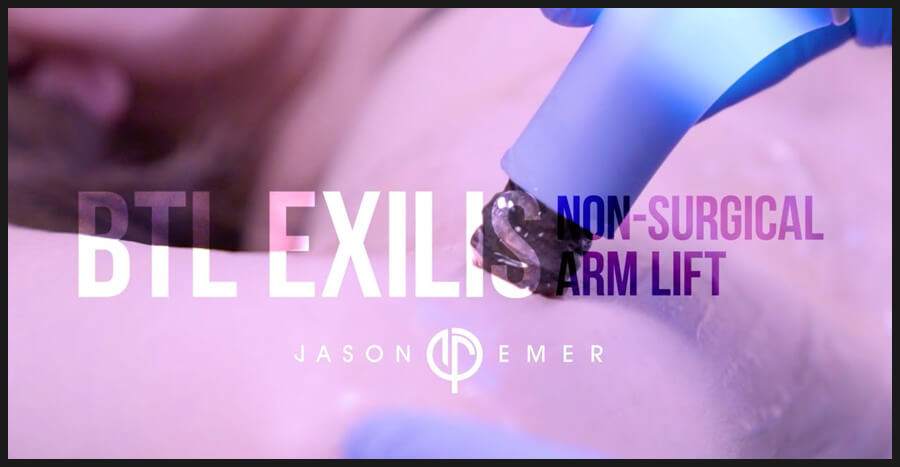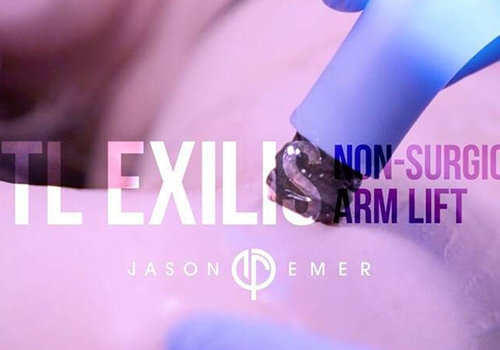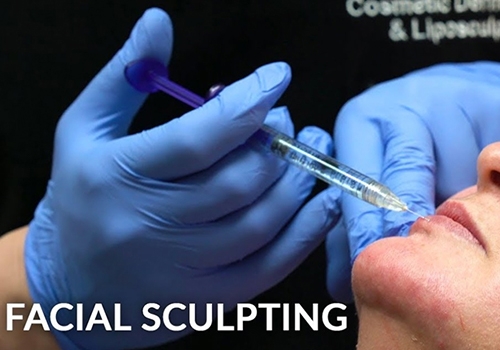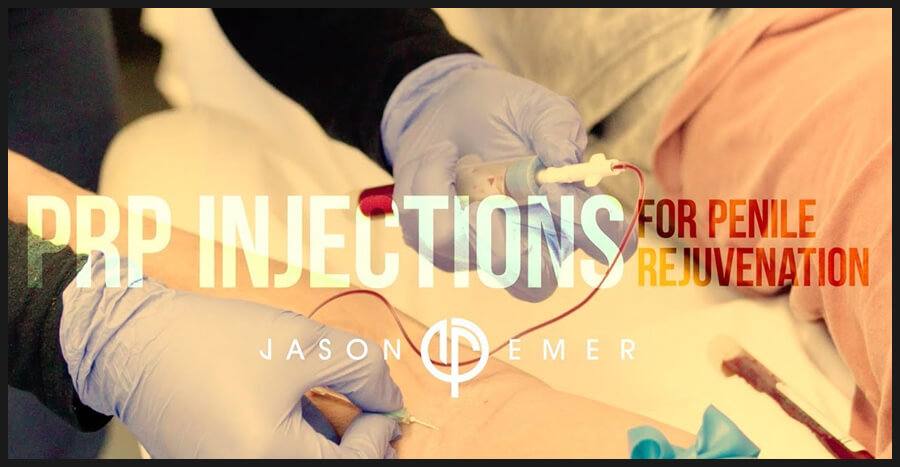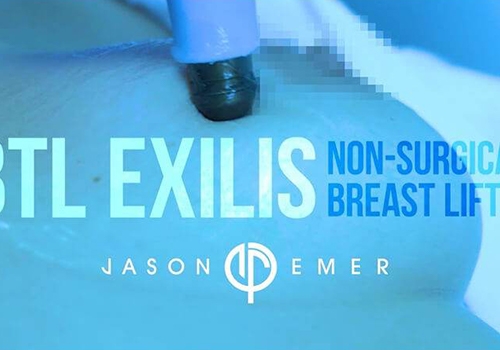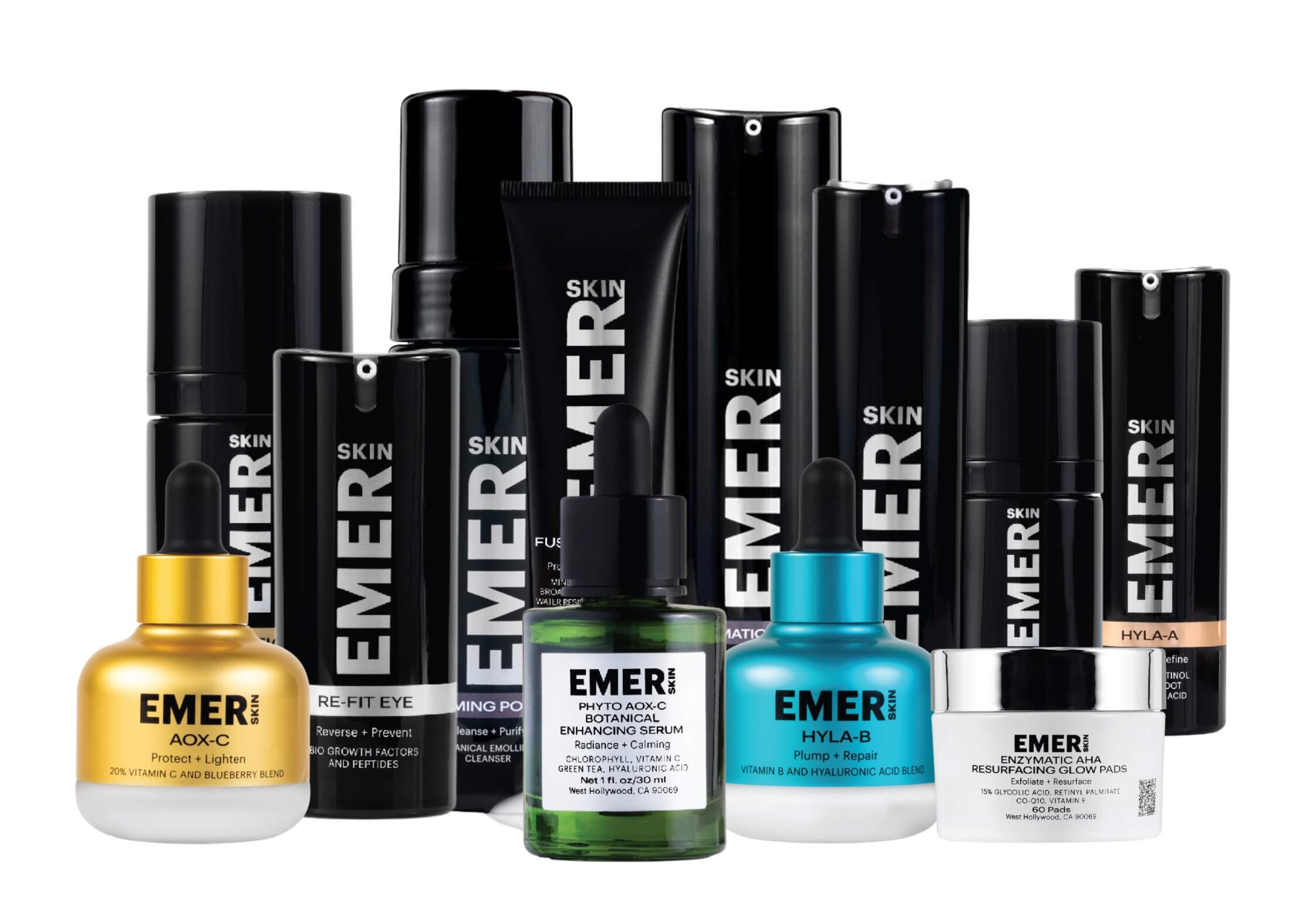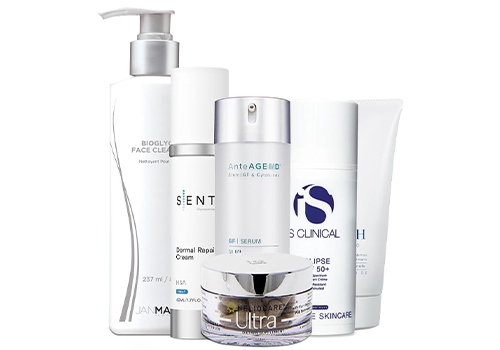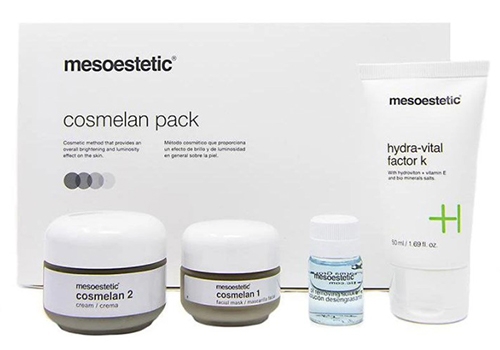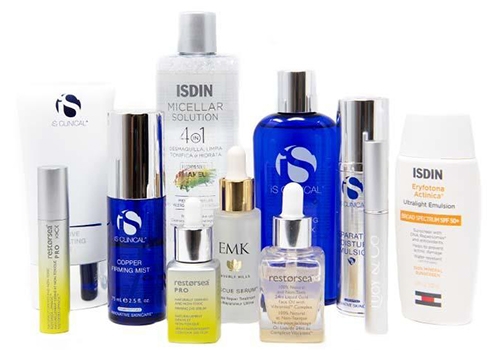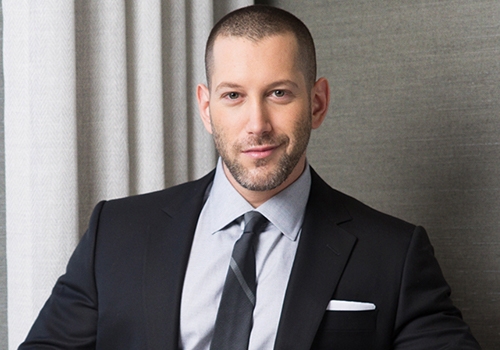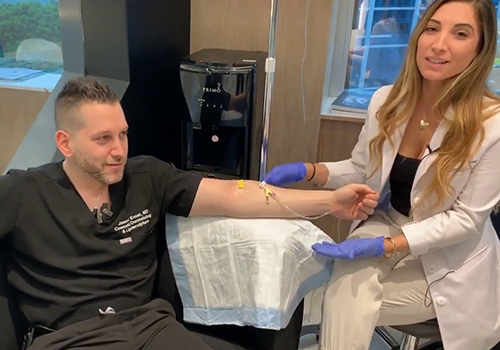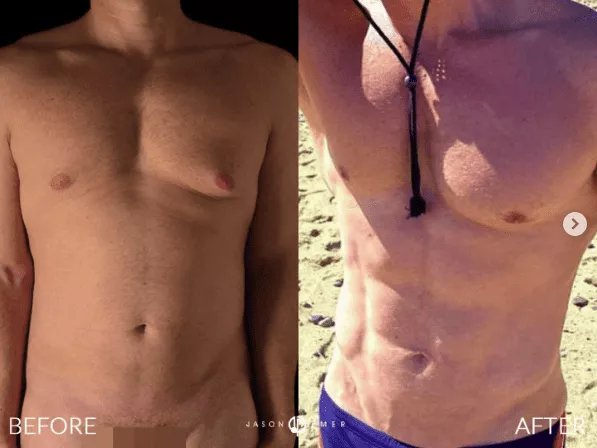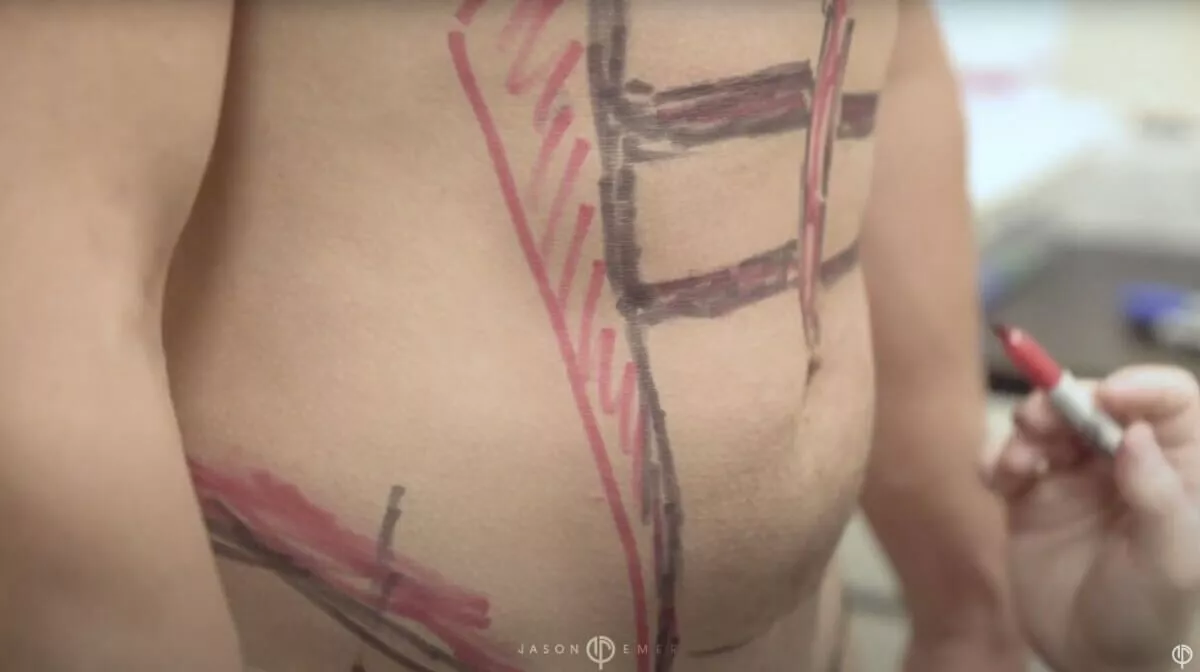Our faces are designed for dramatic expression. We raise our brows, scrunch up our noses, and purse our lips to show the world how we feel. Over time, those muscle movements are etched into our skin: Our movement lines become visible at rest, resulting in unwanted lines, folds and wrinkles. This is one natural sign of aging that cosmetic dermatologist and facial sculpting pioneer Dr. Jason Emer is able to address with injectable “freezers” (or neuromodulators) like Botox, Dysport, and Xeomin. These toxins are the gold standard treatment for preventing and slowing the formation of movement lines and wrinkles, particularly those on the forehead, around the eyes, and between the eyebrows.
And yes — there is an art to Botox. Too high a dose gives you a long-term result but with a frozen, unnatural look, that is incapable of expression. Too little a dose, and you’ll see very little or no improvement. The art of using injectable relaxers or “freezers” is identifying the proper injection location, using a conservative approach, and customizing the dosage for each patient depending on the condition of their skin and their ultimate aesthetic goals.

Dr. Emer injects neuromodulators like Botox, Dysport, and Xeomin directly into the muscle, causing the muscle to weaken and slow its activity, thereby reducing the appearance of lines and wrinkles. For younger patients without visible wrinkles, Dr. Emer suggests microdroplets of Botox (“Baby Botox”) as a preventive measure. Neuromodulators are used in various parts of the face, including the:
- Forehead
- Glabellar lines (“11s” / frown lines)
- Crow’s feet
- Nose wrinkles (“bunny lines”)
- Lip lines
- Horizontal neck lines (“tech neck”)
- Vertical neck lines / platysmal bands
- Jawline (“Nefertiti Lift”)
How does it work?
Injectable relaxers like Botox, Dysport, and Xeomin work by binding to receptors that send nerve signals for muscles to contract. Since your body is constantly creating new receptors and neurotransmitters, it needs to be maintained on a consistent basis. Without maintenance, the wrinkles will slowly return as the muscle regains function over time.

Aside from their muscle relaxing and “freezing” capabilities, Botox, Dysport, and Xeomin have been shown to shrink enlarged pores and reduce oil production in those with thick, porous, or oily skin, thereby improving the overall appearance and texture of the skin. Dr. Emer uses micro-ampule infusion / AQUAGOLD Fine Touch microneedling to infuse patient-specific serums, vitamins, nutrients, fillers, and neuromodulators like Botox into the skin. By infusing these products superficially, Dr. Emer is able to decrease redness for patients with rosacea, melasma, and hyperpigmentation (see results below) as well as rejuvenate and hydrate the skin, relieve congested pores, decrease milia (the pearly bumps in the skin), control acne flares, improve overall skin texture, and prevent skin cancers long-term.

Additionally, these neuromodulators can help reduce migraines and improve excessive sweating (“hyperhidrosis”) on the palms, scalp, buttocks, underarms and genitals/scrotum.
Neuromodulators take 10 to 14 days to begin working and typically last for 2 to 3 months, though this duration varies depending on each patient’s unique response to the treatment and the specific areas treated. Individuals who exercise more or are more expressive may find that the treatment does not last quite as long and, therefore, often require a much higher dosage; in the instance that a certain product does not work for you, Dr. Jason Emer often advises that you try an alternate product to see if your skin responds differently.

What is the difference between Botox, Dysport, and Xeomin?
Botox, Dysport, and Xeomin all essentially perform the same function (relaxing or “freezing” the muscles). Dysport tends to diffuse more than Botox and is softer at the edges, so it is the preferred treatment for areas such as the eyes or neck that benefit from the spreading of the product — as well as larger treatment areas such as the scalp, groin, armpits, or larger foreheads. On the other hand, Botox is a more targeted, focused treatment, which makes it ideal for areas such as the corners of the mouth, chin, eyebrows (“11” lines), and shorter/smaller foreheads. Xeomin is the one product that is highly purified in order to remove accessory proteins, so patients who may be allergic to or don’t respond to Botox or Dysport may have more success with Xeomin.
However, the injector and his/her expertise is far more critical than any brand name. An experienced, board-certified dermatologist like Dr. Jason Emer can evaluate your skin and determine which neuromodulator will best suit your needs.
Can men get Botox, Dysport, or Xeomin as well?
It’s a common misconception that men should avoid neuromodulators for fear of looking “done,” “frozen,” or “feminized.” However, the truth is that freezers can be an effective cosmetic treatment for anyone looking to appear more youthful, approachable, and attractive. Botox for men (or “Brotox”) is more popular than ever before, particularly when used for wrinkle and fine line prevention. It is important to see an expert in neuromodulators and facial sculpting with injectables to avoid any undesired changes to your appearance.
Can Botox improve my forehead lines?
The forehead is the one place where it is most obvious if a person has had “work” done (particularly for men), so this difficult-to-treat area requires an expert’s hand and a subtle approach. By using injectable relaxers or “freezers” into the glabellar lines and crow’s feet, Dr. Emer can balance wrinkles and movement in this area for those who want no changes to their eyebrows (or eyebrow shape) or create an eyebrow lift (or Chemical Brow Lift). He can then lightly soften the lines across the forehead with small aliquots (or baby doses) of the toxin. In addition to relaxers and “freezers,” Dr. Emer injects soft fillers like Belotero superficially into the forehead lines and wrinkles to improve aging lines; using thicker or more robust fillers in this area can result in unintended lumps or swelling in the creases.
Can Botox improve my glabellar lines?
Also known as scowl lines, frown lines or “11” lines, the glabellar lines are the two vertical creases that gradually develop between the eyebrows as we age. As these lines form and deepen, they can give you a grumpy or unapproachable appearance. To soften these lines and prevent wrinkles from forming, Dr. Emer injects Botox, Dysport, or Xeomin into the glabellar complex, directly into the procerus and corrugator muscles, and above the eyebrows. For deeper glabellar lines or strong “11” lines, Dr. Emer uses a combination of toxins with injectable fillers, laser treatments, and microneedling with PRP.
Can Botox improve my crow’s feet?
In the summer months, when we accidentally leave our sunglasses at home and squint throughout the day, we ultimately pay a price: the formation of crow’s feet. These small horizontal lines or wrinkles that form at the outer corners of our eyes can appear early on in life, giving you a prematurely aged appearance. Dr. Emer injects small amounts of Botox into the lateral crease of the crow’s feet to “freeze” the area and diminish the wrinkles; he also injects Botox into this area as a preventive measure to slow the formation of lines and wrinkles around the eyes. For his female patients, Dr. Emer strategically injects just above and below the crow’s feet to soften those areas and give a subtle lift to the brow (1 to 2 mm elevation), also known as a Chemical Brow Lift.
Can Dysport improve my bunny lines?
Another group of muscles we tend to overuse are those on the sides of our nose, causing the formation of nose wrinkles or “bunny lines.” When combined with laser treatments, microneedling with PRP, and injectable fillers for volume loss or fine wrinkle formation, injectable relaxers or “freezers” work well to improve these wrinkles and provide long-term prevention. For deeper creases, fillers can be used to contour and shape the nose area (also known as a liquid nose job or rhinoplasty).
Can Botox improve my lip lines?
The muscles around our mouth are some of the most overworked muscles on our face, creating lines above, below, and at the corners of our lips. By injecting a small amount of relaxers or “freezers” into this area, Dr. Emer can trigger the muscles to relax, cause the vertical lines to soften, and even give the lip a “flip.” For deeper lines around the mouth, Dr. Emer will often pair neuromodulators with injectable fillers (such as Restylane Silk, Belotero, or Juvederm Volbella), deep facial peels, microneedling RF (such as Fractora or Morpheus), CO2 laser resurfacing, and Renuvion (J-Plasma) helium plasma radiofrequency.
Can Dysport improve my neck lines?
For those who spend a great deal of time staring down at their phone, this routine posture can have long-term effects in the form of “Tech Neck” (or “Millennial Neck”), the horizontal lines that run along the neck. Dr. Emer uses soft fillers like Belotero to reduce wrinkles and folds and neuromodulators such as Dysport to relax the movement lines in the neck and prevent or slow the formation of lines and wrinkles. Incorporating laser treatments and microneedling with PRP further enhances his patients’ outcomes.
Can Botox improve my vertical neck bands?
Vertical bands in the neck (or platysmal bands) are formed through overuse of the platysma, a superficial muscle that spans from the upper chest to the lower face. As the platysma muscle contracts, it can cause prominent vertical bands to form over time. Dr. Emer uses Botox, Dysport, or Xeomin to weaken the platysma muscle and soften the bands, and he will often complement “freezers” with skin tightening treatments such as InMode FaceTite, Ultherapy, Thermage, or thread lifting (Silhouette InstaLift or NovaThreads). More significant banding or skin laxity in the neck may require a surgical neck lift (platysmaplasty) procedure.
Can Botox improve my jawline?
For female patients who have a fuller, broader, or squared-off jawline (and, in particular, those who have TMJ or grind their teeth and therefore see enlargement in this area), Dr. Emer injects Botox, Dysport, or Xeomin into the masseter muscle to “freeze” or relax the overworked muscle. The result is a slimmer, contoured the jawline, a softer, more rounded jaw, and a heart-shaped face for those seeking facial slimming and contouring.
Can Botox give me a Nefertiti Chemical Neck Lift or Tightening?
Yes. The non-surgical “Nefertiti Lift” is named after the Egyptian queen, now famous for her long, elegant neckline and defined jaw. Dr. Emer creates this highly desired look by administering Botox along and under the jawline and in the platysmal bands. The result is a tighter, more sculpted jawline and a lift fit for a queen — but without the expense of surgery.
Am I a good candidate for neuromodulator or toxin treatments?
A formal evaluation from a board-certified dermatologist is necessary to verify if you are a good candidate for Botox, Dysport or Xeomin, to determine if neuromodulators can provide the desired results, and to create a tailored treatment plan that works best for you.
What are the risks involved with Botox / Dysport / Xeomin?
Neuromodulators like Botox can cause headaches or allergic reactions in a small percentage of patients. In these unforeseen instances, we suggest following up with a cosmetic dermatologist.
If for any reason there is unevenness or asymmetry in the treated areas, this can be corrected with additional neuromodulator injections. If needed, the effects of Botox, Dysport and Xeomin can softened with Thermage, Ultherapy, or Venus Legacy treatments.
On the other hand, too much toxin injected into the skin can result in a “heavy” look — such as fallen brows (forehead) or fallen eyelids (eyebrows) — and, unfortunately, there is no treatment to correct this result. The only course of action is to wait 2 to 4 months for the toxin(s) to wear off.
For these reasons, Dr. Emer strongly urges that those interested in Botox, Dysport, or Xeomin treatments consult only with an experienced, board-certified dermatologist and expert in facial sculpting.
What is the downtime after a neuromodulator injection?
There is zero downtime after a standard Botox, Dysport, or Xeomin injection; patients can return to their daily lives immediately after treatment. Some patients may experience minor swelling, redness, or lumps in the areas treated.
How do I schedule a consultation with Dr. Emer?
To schedule a consultation with Dr. Emer in Beverly Hills / Los Angeles / West Hollywood, California, please reach out to our concierge to schedule an appointment. Call 424-800-4140 or email us at appointments@jasonemermd.com.
Share on FacebookShare on TwitterShare on LinkedinShare on Pinterest

